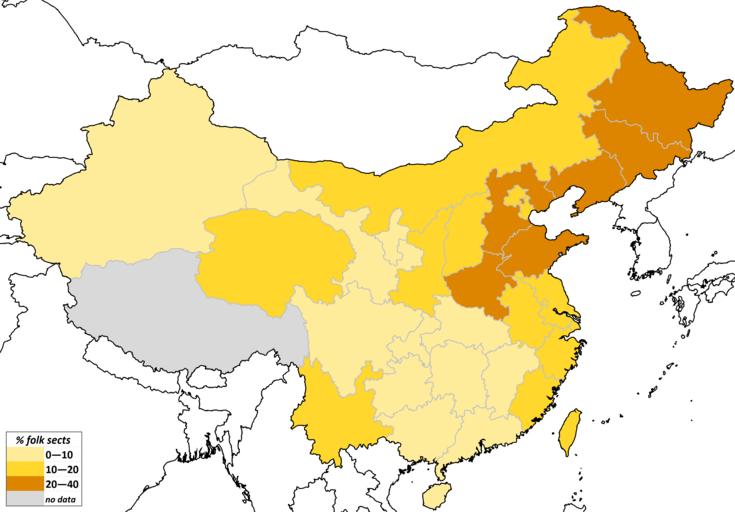MAKE A MEME
View Large Image

| View Original: | Folk religious sects' influence by province of China.png (3096x2157) | |||
| Download: | Original | Medium | Small | Thumb |
| Courtesy of: | commons.wikimedia.org | More Like This | ||
| Keywords: Folk religious sects' influence by province of China.png Analysis of the diffusion of influence of the folk religious sects µ░æķ¢ōÕ«ŚµĢÖ m├Łnji─ün z┼Źngji├Āo µ░æķŚ┤µĢÖķŚ© m├Łnji─ün ji├Āom├®n or µ░æķŚ┤µĢÖµ┤Š m├Łnji─ün ji├Āop├Āi and Confucian churches and jiaohua transformative teachings in China according to different sources including incomplete data on organised folk religions by province from the World Religion Database represented in a map by Harvard University; contemporary scholars' fieldwork describing the proliferation of Confucian churches in Shandong and other provinces; historical data of the membership of folk sects and Confucian churches in the Japanese-controlled state of Manchuria Harvard University https //worldmap harvard edu/data/geonode wrd_province_religion_qg0 World Religion Map based on data from the World Religion Database The studies of China's Regional Religious System find very high activity of popular religion and secret societies and low Buddhist presence in northern regions while very high Buddhist presence in the southeast http //chinadatacenter org/Files/201203201336113771 pdf source Integrated with Hebei Fieldwork by Thomas David Dubois see http //www bniao org/Asset/Source/bnBook_ID-1637_No-01 pdf The Sacred Village Social Change and Religious Life in Rural North China University of Hawaii 2005 testifies the dominance of folk religious sects specifically the Church of the Heaven and the Earth and the Church of the Highest Supreme since their energetic revival since the 1970s p 13 in the religious life of the counties of Hebei Religious life in rural Hebei is also characterised by a type of organisation called the benevolent churches and the folk sect known as Zailiism has returned active since the 1990s Henan Thomas Heberer Sabine Jakobi https //www uni-due de/oapol/wordpress/wp-content/uploads/Heberer-Jakobi_Henan-The-Model1 pdf Henan - The Model From Hegemonism to Fragmentism Portrait of the Political Culture of China's Most Populated Province Duisburg Working Papers on East Asian Studies May 2000 n 32 As explained in the paper Henan has been for centuries a hub of folk religious sects which constitute significant focuses of the religious life of the province p 7 Early examples include the Yellow Turbans huangjin a messianist movement of Daoist inspiration in the 2nd century and the Red Turbans hongjin a chiliastic movement awaiting the appearance of the Buddha Maitreya Milefo in the 14th century In recent centuries this province was a major focal point of the Sect of Heavenly Order tianlijiao the White Lotus-sect bailianhui the Nian-movement the Heavenly Bamboo-movement tianzhujiao the Society of Elder Brothers gelaohui the Green and Red Guild qinghongbang the Persistent Way yiguandao -movement the sect Great King of Red Heaven and the Society of the Great Sword dadaohui just to mention the most important ones Henan also has a strong Confucian orientation p 5 Northeast China According to official records by the then-government the Universal Church of the Way and its Virtue or Morality Society had 8 million members in the state of Manchuria or northeast China making up about 25 of the total population of the area which then also comprehended the easternmost end of contemporary Inner Mongolia see http //assr revues org/17633 Ownby 2008 Sects and Secularism in Reading the Modern Chinese Religious Experience Folk religious sects of a Confucian nature or Confucian churches were in fact very successful in the northeast gathering large slices of the population Shandong Alex Payette's Local Confucian Revival in China Ritual Teachings śConfucian Ö Learning and Cultural Resistance in Shandong China Report February 2016 vol 52 no 1 pp 1-18 doi 10 1177/0009445515613867 Shandong is traditionally a stronghold of Confucianism and is the area of origin of many folk religious sects and Confucian churches of the modern period including the Universal Church of the Way and its Virtue õĖćÕøĮķüōÕŠĘõ╝Ü W├Āngu├│ D├Āod├®hu├¼ the Way of the Return to the One ńÜłõŠ ķüō Gu─½y─½d├Āo the Way of Unity õĖ Ķ▓½ķüō Y─½gu├Ānd├Āo and others Although all these religions were driven underground during the Cultural Revolution and remain unrecognised by the contemporary Chinese government they began to resurface in the 1980s According to the Chinese General Social Survey of 2012 see http //iwr cass cn/zjwh/201403/W020140303370398758556 pdf CFPS 2012 page 13 about 2 2 of the total population of China around 30 million people claims membership in the folk religious sects which have likely maintained their historical dominance in central-northern and northeastern China 2016-02-14 Aethelwolf Emsworth Allowed to copy and distribute Religion maps of China Chinese folk religion Confucianism | ||||